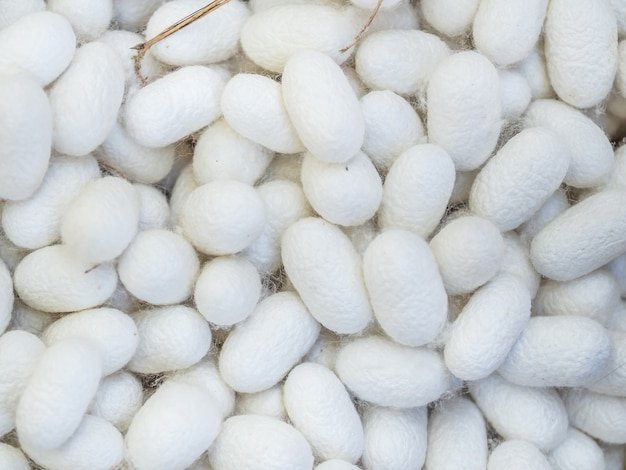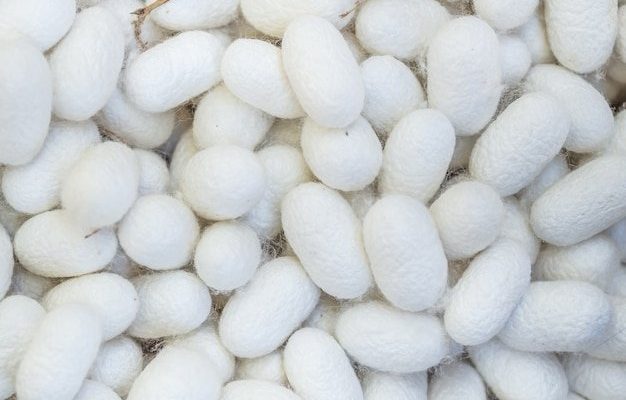
Cocoons are fascinating in their own right. They’re not just a protective shell; they’re a place where silkworms undergo significant changes. Imagine being in a small room where all the magic happens. But how long do these little guys hang out in their “rooms” before emerging as moths? The answer can vary, and that’s what we’re going to explore.
The Silkworm Life Cycle: An Overview
Before jumping into the cocoon phase, let’s take a quick look at the entire life cycle of a silkworm. It’s pretty amazing how these creatures grow and change.
1. **Egg Stage**: It all starts when a female moth lays eggs, usually about 300 at a time. These tiny eggs are super small—almost like a little speck of dust! In about 10 days, they hatch into larvae, also known as silkworms.
2. **Larva Stage**: Once they hatch, silkworms enter the larval stage. This is when they eat a lot—mostly mulberry leaves. They munch and munch, growing rapidly. After about 4 to 6 weeks, they’re ready to move on to the next stage.
3. **Cocoon Stage**: This is where the magic happens. The silkworms spin their cocoons, sealing themselves inside for protection.
4. **Pupa Stage**: Inside the cocoon, the silkworm transforms into a moth.
5. **Adult Stage**: Finally, the adult moth breaks free from the cocoon after about 10 to 14 days, ready to continue the cycle.
Understanding this life cycle helps put the cocoon stage into perspective. It’s the final stretch before they emerge as new moths.
How Long Do Silkworms Stay in Cocoon Form?
So, how long do silkworms actually stay cooped up in their cozy cocoons? Generally, they stay in this form for about **10 to 14 days**. However, several factors can influence this duration, including temperature, humidity, and environmental conditions.
The cocoon serves as a protective barrier while the silkworm undergoes significant changes. Inside, they’re getting ready to burst forth into life as moths. It’s like being in a warm and snug blanket while you dream about the future!
During this time, the silkworms go through a process called metamorphosis, which is a fancy word for transformation. They’re changing from a caterpillar into a moth, and this can be quite the undertaking! When the conditions are just right—think comfy and cozy—they may emerge sooner. But if it’s a bit chilly or the humidity is off, they might take a little longer to make their grand exit.
The Purpose of the Cocoon
You might be wondering why silkworms even bother with cocoons. What do they provide? Well, there are a few important reasons for this protective stage:
– **Safety from Predators**: The cocoon acts as a shield against predatory animals and insects. It’s like putting up a “Do Not Disturb” sign while they’re working on their transformation.
– **Controlled Environment**: The cocoon helps regulate temperature and moisture, creating a perfect environment for metamorphosis. It’s like having a personal climate-controlled room!
– **Time for Growth**: The cocoon allows the larvae to spend time growing and developing without any interruptions. Inside, they can focus solely on becoming moths.
It’s fascinating to think about how something so simple can serve such crucial roles during this stage of their life.
Factors Affecting Cocoon Duration
Several factors can impact how long a silkworm remains in its cocoon. Here are a few to consider:
1. **Temperature**: Silkworms thrive in warmer temperatures. If it’s too cold, they might take longer to emerge. So, keeping their environment warm and cozy is key.
2. **Humidity**: The humidity levels also play a significant role. Higher humidity can help in quicker metamorphosis, while dry conditions can slow things down.
3. **Species Variation**: Different species of silkworms might have slightly varying durations in their cocoons. For instance, some may take a week, while others can be in there for two weeks.
It’s essential to monitor these factors if you’re raising silkworms yourself. The right conditions can make all the difference in the world!
Common Mistakes in Raising Silkworms
If you decide to raise silkworms, there are a few pitfalls to avoid. Here are some common mistakes that can affect their cocoon phase:
1. **Ignoring Temperature and Humidity**: It’s vital to maintain optimal conditions. If the room is too cold or too dry, it can hinder their development.
2. **Overcrowding**: Silkworms need space. If they’re packed too tightly, it can lead to stress and slow growth.
3. **Improper Feeding**: Feeding them the right leaves is crucial. Mulberry leaves are the best choice, and they need lots of it!
4. **Not Monitoring Conditions**: Regularly check on things like temperature and cleanliness. A little attention can go a long way.
By being aware of these common mistakes, you can help your silkworms flourish during their cocoon stage.
The Journey from Cocoon to Moth
Once the silkworms have spent their time in the cocoon, it’s almost showtime! They’ll start to wiggle and move inside, signaling that they’re ready to break free.
When the time comes, the moth uses a special fluid to soften the silk fibers, making it easier to escape. This part is just as amazing as the cocoon itself! The moth will emerge, often looking a bit crumpled, but soon they’ll stretch out their wings and dry them.
This transformation is not just about changing form; it’s about continuing the life cycle. Once they’re fully developed, they’ll look for mates and start the cycle all over again.
It’s a beautiful process that highlights the importance of each stage—from egg to larva, to cocoon, and finally to moth.
So, how long do silkworms stay in cocoon form? Typically about **10 to 14 days**, but this can vary based on several environmental factors. The cocoon is essential, providing safety and a nurturing environment for these creatures as they undergo one of nature’s most fascinating transformations.
Whether you’re raising silkworms for fun or just exploring their life cycle out of curiosity, understanding their needs and behaviors adds depth to the experience. Remember, it’s all about creating the right environment, ensuring they have the best chance to thrive.
In the end, every little detail plays a part in the beautiful journey of the silkworm. So, the next time you see a silk garment, you can think about the incredible process that brought it to life!

